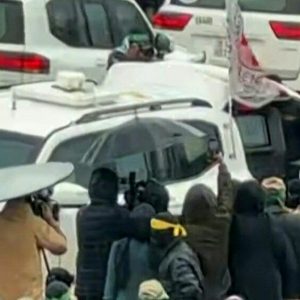Report sheds light on child victims of British military’s actions in Afghanistan
ISTANBUL (AA) – The latest data from the UK Defense Ministry has revealed that British soldiers were directly involved in the deaths of 135 children during their nine-year deployment in southern Afghanistan. The UK has already paid compensation to the families of 64 child victims.
According to data compiled by the Action on Armed Violence (AAOV) in its report on British troops deployed in Helmand province between 2006 and 2014, the British authorities paid an average compensation of just £1,656 ($1,893.53) to the victims’ families.
“There were 64 confirmed child victims in Afghanistan where the British military paid compensation, although the number of children killed could be as high as 135,” the AAOV report stated.
It was only possible under the UK’s Freedom of Information Act 2000 to obtain such data.
“Even the lower number is four times more than previously thought, since prior documents released by the United Kingdom’s Ministry of Defense (MoD) had only revealed 16 confirmed child fatalities,” it added.
The British military paid compensation between April 2007 and December 2012 to 64 families involved in 38 incidents.
The report stated that “sometimes the situation that led to a child’s death was treated as cursory in the documentation.”
One-year-old baby
The report says the average age of a child killed during British military operations was six years, with the youngest child killed in March 2009 being a one-year-old baby boy.
It also shows how an 18-month-old baby girl was killed the same year in the Nad-e Ali district of the province.
“Both were killed alongside their mother; just over £3,000 was paid for their deaths,” it added.
While most of the child victims were boys, the report states that “crossfire and airstrikes were the two most common specified causes of death, raising questions about the rules of engagement deployed by the British military in Helmand during that time.”
“Some 68 of the 135 confirmed and suspected child deaths were from air-strikes, constituting some 50% of all deaths,” it added.
The report says, “30 of the 135 confirmed and suspected child deaths were from small arms fire, such as cross-fire. These made up 22% of all deaths.
“The data only captures those Afghans who knew about and were capable of going through the arduous compensation process and had enough evidence for the claim to be accepted by personnel at the Area Claims Office (ACO).
“The threshold for evidence of a claim was not insubstantial. Claimants were frequently asked for photos, medical reports, birth certificates and letters from local Mullahs and were formally interviewed by British personnel to confirm there was no Taliban affiliation… The majority of the 881 fatality claims that were brought to the ACO were rejected, even if children had been killed by British soldiers. Just one-quarter of those received any compensation,” it added.
“The number of children killed following British military action in Helmand should give pause for thought. War invariably leads to death and modern war will always bring civilian casualties, but not reporting on such deaths – however much it might be a source of regret and horror to the soldiers involved in the killings and however accidental such deaths were – would be an omission of responsibility and an erosion of truth,” said AAOV Executive Director Iain Overton.
“This report hopes to give some details to the often-forgotten children killed in war and, in some way, to send a warning to future Westminster politicians who might consider sending troops into battle.”









